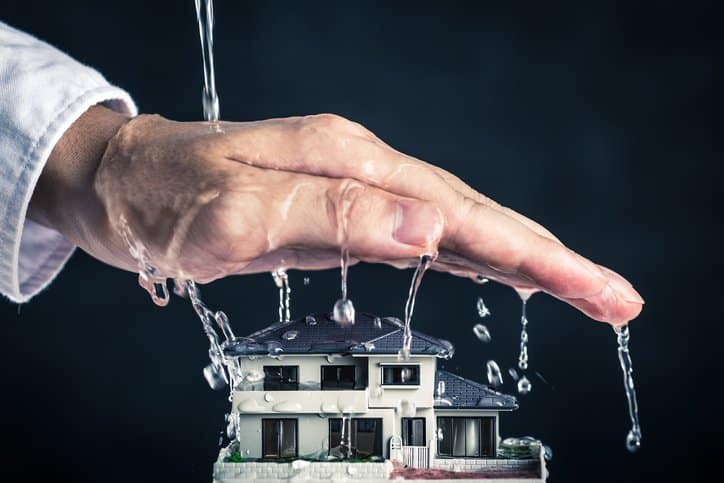Flooding can happen anywhere, anytime and unfortunately there’s no way to predict when it will happen or what form it will take. Flooding can damage homes and businesses in minutes, leaving behind tons of costly damage that could have been prevented. If you’re concerned about flooding in your area, follow these tips from flood services to help you stay safe during a flood.
Types of floods
There are many different types of floods, each with its own causes and solutions. A storm surge is caused by heavy rain or ocean waters that cause flooding in coastal areas. Inland floods happen when streams overflow their banks because of heavy rain or snow melt. Flash floods can occur when the ground becomes so saturated with water that it can't absorb any more and water is forced out onto the surface.
Monitor local weather forecasts and warnings.
Monitoring local weather forecasts and warnings is an important step in staying safe during a flood. Keep up-to-date with the National Weather Service, which updates its information on Facebook, Twitter, and by phone. The National Oceanic and Atmospheric Administration also has access to detailed maps of any potential flooding that may occur. Be aware of the forecasted rainfall totals in your area, as well as any rivers or streams that flow through your property. If you are advised to evacuate due to flooding, do not wait for water levels in the area to reach dangerous levels before leaving.

What to do before a flood
If you live in an area prone to flooding, it is important to take steps now that can help you stay safe if your home or business becomes flooded. The following safety tips are provided by the experts at Flood Services.
- Have your flood insurance coverage in place before disaster strikes
- Keep sandbags on hand for a quick response
- Be aware of any alerts and warnings issued by government officials
- Consider moving valuables out of the basement and up onto the second floor, or higher if possible
- Remove anything that will float from basements and sump pumps so they do not become clogged with debris
- Make sure there are no vents or outside openings where water can enter
Prepare an emergency kit including first-aid supplies, non-perishable food, water, a flashlight, batteries, and a portable radio.
An emergency kit is the most important thing you can do for your family in case of flooding. It's essential that you have all your necessary items stocked before a storm hits so that when the power goes out and water starts seeping into your home, you'll still be able to take care of yourselves without any hassle. A few things that should always be included in your kit are first-aid supplies, non-perishable food, water, batteries, flashlight, and radio. You might want to add some books or other reading material as well.
If instructed by authorities, turn off utilities at the main switches or valves if flooding is imminent.
If you are instructed by authorities to evacuate, turn off utilities at the main switches or valves. Do not leave them on as they could back up and damage your home. For those who need help with this process, the Red Cross provides guidelines for how to do this safely and effectively.
The Red Cross recommends turning off utilities at the main switch or valve. The best way is to shut off all water, gas, and electricity in your home before flooding occurs if it is safe and possible for you to do so.
Move important belongings, electronics, and valuables to higher ground.
Flooding is one of the most frequent natural disasters in the United States. According to FEMA, floods kill more Americans than all other natural disasters combined. With water levels rising and rainstorms on the horizon, it is important for residents of flood-prone areas to take precautions before disaster strikes.
The best way for you and your family members to stay safe during a flood is by getting prepared before it occurs. If you live in an area that is at risk for flooding, you should move important belongings, electronics, and valuables up high off the ground as soon as possible. In addition, keep your vehicle fueled so that you can evacuate when necessary.
Evacuate if directed by authorities.
In the event of a flood, it is important to evacuate immediately if instructed by authorities. A flood can happen quickly and without warning. In order for you and your family to stay safe, there are some things you should do before evacuating.
Pack an emergency bag for each member of the household that includes water, non-perishable foods, snacks, first-aid kit, medications, baby supplies and other essentials that will be needed in the event of an evacuation.
In addition to packing your bags, you should also gather important documents such as birth certificates or passports. You should also take pictures of valuable belongings or irreplaceable items so that you have something to refer back to later on when trying to account for what has been lost during flooding.
Avoid walking or driving through floodwater.
One of the most important things that homeowners should do when there is a flood warning is to turn off their electricity and natural gas. Then, you need to make sure that all appliances are unplugged. If you have some canned food in your basement, it's okay as long as it's stored on shelves or on top of something so that the water doesn't touch it. As for clothes and other personal items, you need to pack them up in sealed plastic bags and put them high enough so that they're not touched by floodwater.
Do not return home until authorities say it is safe.
If you are at home, turn off the main water valve and power to your house.
If you are away, don't come back until authorities say it is safe. Turn off the gas and electricity if possible. Keep in mind that floodwaters can pose significant hazards such as contaminated materials or raw sewage that can expose people to hazardous materials including chemicals, disease-causing organisms (bacteria, viruses), and other health threats such as injuries from sharp objects in or near floodwaters. There have been several reports of snakes hiding in sewer pipes during floods; therefore flooding may also expose people to reptiles that may bite when disturbed.
Do not touch electrical equipment if it is wet or you are standing in water.
Do not touch electrical devices that are wet. The electricity can travel through your body and cause cardiac arrest. If you're standing in water, do not touch any electrical device. Standing in water means you have already been electrocuted by the water, and this will just make it worse.
Protecting your property from flood damage
As Hurricane Harvey and Irma (and, unfortunately, more) have shown, flooding is one of the most destructive natural disasters. If you live in an area that has a history of flooding, or if your home is in a low-lying area susceptible to flooding, it's important that you take the necessary steps now to protect your property. Here are some things you can do before disaster strikes:
1. Remove any items stored near ground level and place them on higher ground or in waterproof containers. 2. Strap down anything hanging from the ceiling so it doesn't get knocked loose by floodwaters and fall down on your head while you sleep. 3.
If your home has been damaged by flooding, contact restoration company
If your home has been damaged by flooding, it can be an overwhelming and stressful experience. Fortunately, there are professional restoration companies that specialize in restoring homes damaged due to flooding. These restoration companies have the expertise and specialized equipment to safely and effectively restore your home and belongings to pre-flood condition. The restoration process typically begins with an inspection of the home, where a team of experts will assess the damage and determine the best course of action to restore the home. This may include removing standing water, drying out the property, and restoring walls and floors. In some cases, structural repairs may be needed to ensure the safety of the property. Once the restoration process has begun, the team will take steps to make sure the property is safe. This may include installing air scrubbers to remove airborne contaminants and mold spores, as well as using hydroxyl generators to reduce bad odors. Then, the team will begin the process of restoring the home, which may include dehumidifying, cleaning and drying out carpets, walls and furniture, and replacing damaged items as needed. When the restoration is complete, the team will provide a detailed report on the work that was done, as well as a list of any items that cannot be solve.
Inspect your home for damage.
It's important to inspect your home for damage, even if it doesn't seem like anything is wrong. You should check the attic and basement, as well as any areas that may have been submerged. If you find any water inside the walls of your house, call an expert immediately. If you don't know where the water came from, you'll need an expert to assess the problem.


No comments yet